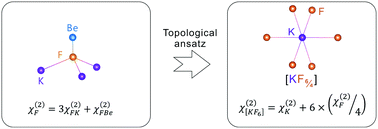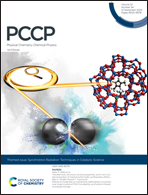The partition principles for atomic-scale structures and their physical properties: application to the nonlinear optical crystal material KBe2BO3F2†
Abstract
In implementing the materials genome approach to search for new materials with interesting properties or functions, it is necessary to find the correct functional motif. To this end, it is common to partition an extended structure into various building units and then partition its properties to find the appropriate functional motif. We have developed the general principles for partitioning a structure and its properties in terms of a set of atoms and bonds by analyzing the differential cross-sections of neutron and X-ray scattering phenomena and proposed the procedures with which to partition an extended structure and its properties. We demonstrate how these procedures work by analyzing the nonlinear optical crystal KBe2BO3F2. Our partitioning analysis of KBe2BO3F2 leads to the conclusion that the second harmonic generation response of KBe2BO3F2 is dominated by the ionically bonded metal-centered groups.

- This article is part of the themed collection: Celebrating 60 years of the Fujian Institute of Research on the Structure of Matter


 Please wait while we load your content...
Please wait while we load your content...